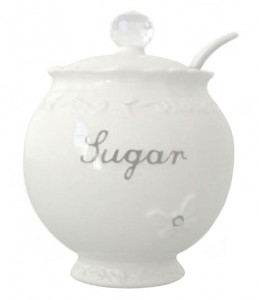Sugar Coated! Types of Sugars
Sugar adds sweetness to our lives. Different types of sugars just make the sweetness unique. We mix sweetness into our lives through smiles and into our food through sugar.
On hearing the word sugar, something that comes into our mind is the white crystalline substance stored on our kitchen shelf. What we are least aware of is that there are many different forms of sugar manufactured to suit the different needs of our kitchen. A home cook may not have much experience in trying all the different forms of sugar but an expert at baking has enough knowledge regarding this.
Being professional bakers, our team at WarmOven has uses most of the varieties of the sugars detailed below. We are providing an overview of baking and how the different types of sugars make a difference through this short article.
1. White Granulated Sugar or Regular Sugar –
It is a highly refined, multipurpose sugar which is also called as refined, table or white sugar. It is made from sugarcane or sugar beets. White sugar is prepared by removing all the natural molasses present in it. It is made up into fine crystals such that the crystals don’t stick together which makes it a perfect ingredient for measuring, sprinkling onto food and dissolving in drinks. This variety of sugar is most commonly used in sweet preparations, desserts and also in baking.
2. Icing Sugar or Powdered Sugar –
This form of sugar has several names like icing sugar, powdered sugar, 10X sugar or confectioners’ sugar.
Icing sugar is prepared by finely grinding the granulated sugar and mixing it with a small amount of cornstarch which prevents the sugar from caking.
Frostings and glazes are normally prepared using this form of sugar. The white snowy glaze over cakes and doughnuts is nothing but icing sugar

3. Decorating Sugar or Coarse Sugar –
As the name suggests, the coarse sugar has slightly larger crystals than the normal granulated sugar. Coarse sugar is also hard in texture and has an opaque color. It is also called as nib sugar, hail sugar or pearl sugar. The sugar crystals are sweeter than granulated sugar and even take time to dissolve when heated or added into liquids. It is used in the desserts where a sugary texture should be provided as the crystals do not dissolve easily and keep their shape even at high temperature. Coarse sugar is mainly used for decorating and is available in a variety of different colors.
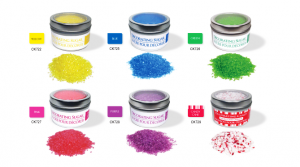
4. Sanding Sugar –
Sanding sugar is another variety of crystalline sugar whose crystal size is between the regular sugar and coarse sugar. It is also a form of decorating sugar which comes in a spectrum of colors. What makes this sugar different is its sparkly shine which comes because of its ability to reflect colors. The large size of the crystals makes it resistant to heat which enables it to add extra crunch and texture to cookies and other baked goods.
5. Light and Dark Brown Sugar –
Brown sugar is white sugar which has cane molasses added into it. Molasses is the by-product obtained during the refining process of sugarcane (or sugar beet) into sugar. It is what remains after the 1st, 2nd & 3rd boiling of sugar cane juice.
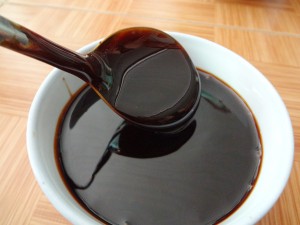
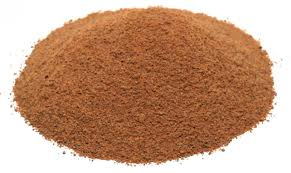
The light or dark brown sugar differs in the amount of molasses added into it. Light brown sugar has lesser amount of molasses and dark brown sugar has a higher amount of added molasses. Light brown sugar has a wet, sandy texture and a delicate caramel flavor. It is generally used in baking, sauces and glazes. Dark brown sugar has a richer flavor which makes its use more appropriate in richer foods such as gingerbread.
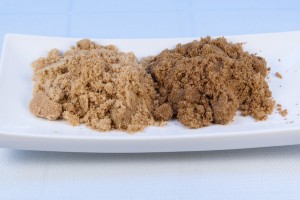
Brown sugar gets hardened up usually when left in open air which makes it best to store it in airtight container. Brown sugar can be softened by heating it in a microwave for a few seconds or by placing a piece of bread in a bag containing the brown sugar and leaving it for a day. Brown sugar can be easily prepared by mixing granulated sugar with molasses.
6. Caster Sugar –
Caster sugar is also called as superfine, ultrafine or bar sugar. It is the smallest size of white sugar available in the market. Caster sugar is generally used in preparing smooth desserts such as syrups, cocktails, mousse or puddings. This sugar also goes great with cold beverages as it does not need much time or heat to dissolve.
7. Turbinado Sugar –
Turbinado sugar is a raw form of sugar which has the surface molasses washed off. It is minimally refined, has a lighter color and larger crystal size when compared to the regular brown sugar. It is usually mistaken to be the standard brown sugar because of its color. The sugar is lower in calories than the regular sugar due to its higher moisture content. This form is sugar has a delicate caramel flavor and is normally used as a sweetener in beverages but can also be used in baking.
8. Muscovado or Barbados Sugar –
It is a type of British brown sugar which is dark brown in color and has more molasses content than light or dark brown sugar. It comes in dark and light colors. These sugar crystals are slightly larger than the regular sugar. It has a sticky, wet, sandy texture with a rich and complex flavor. It can be used as a substitute to brown sugar but has a richer flavor compared to brown sugar. It is used in sweets which have a rich flavor such as gingerbread, coffee cake and fudge. It goes well with barbeque sauce, marinades and savory dishes.
9. Demerara Sugar –
This type of sugar is used popularly in England. This is also a form of raw cane sugar which is minimally refined but is large grained and crunchy in texture. It is amber colored and has a subtle natural flavor of molasses in it. It goes great with beverages like tea or coffee. It is also good when dissolved into hot cereals, when added into baked dishes or when used as a topping on baked goods like muffins, cookies and cakes.
10. Cane Sugar –
Cane sugar is produced only from sugarcane and is minimally processed. It has a larger grain and darker color than the regular sugar. The cost of cane sugar is high when compared to regular sugar. Its use is similar to the regular sugar.



